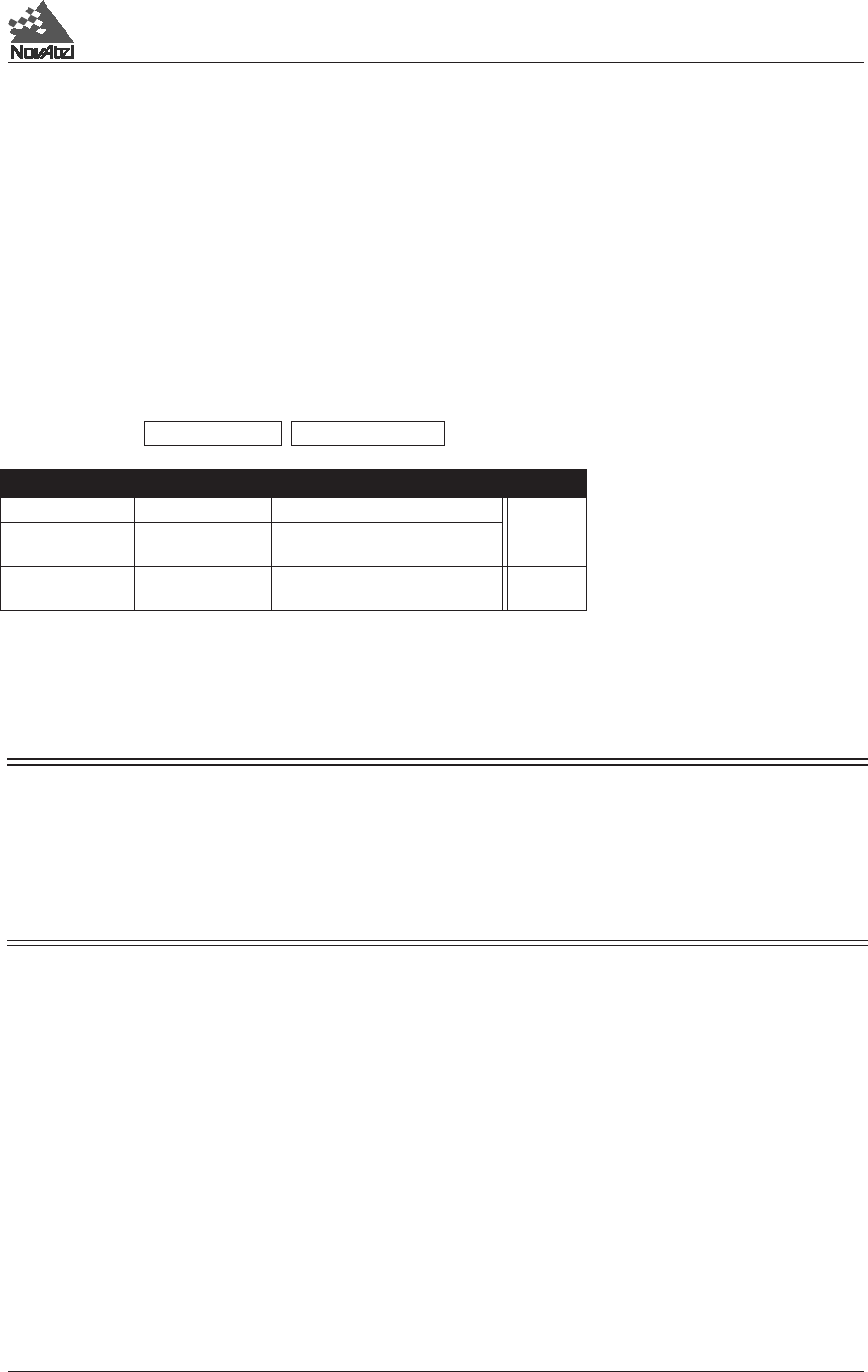
C Commands Summary
MiLLennium Command Descriptions Manual 77
DGPSTIMEOUT
This command has a two-fold function:
(1) to set the maximum age of differential data that will be accepted when operating as a remote station. Dif-
ferential data received that is older than the specified time will be ignored. When entering
DGPS delay,
you can ignore the ephemeris delay field.
(2) to set the ephemeris delay when operating as a reference station. The ephemeris delay sets a time value
by which the reference station will continue to use the old ephemeris data. A delay of 120 to 300 seconds
will typically ensure that the remote stations have collected updated ephemeris. After the delay period is
passed, the reference station will begin using new ephemeris data. To enter an ephemeris delay value,
you must first enter a numeric placeholder in the
DGPS delay field (e.g., 2). When operating as a reference
station,
DGPS delay will be ignored.
Syntax:
Example 1 (remote):
dgpstimeout 15
Example 2 (reference):
dgpstimeout 2,300
NOTES:
The
RTCA Standard for SCAT-I stipulates that the maximum age of differential correction messages cannot
be greater than 22 seconds. Therefore, for
RTCA logs, the recommended DGPS delay setting is 22.
The
RTCA Standard also stipulates that a reference station shall wait five minutes after receiving a new
ephemeris before transmitting differential corrections. This time interval ensures that the remote stations
will have received the new ephemeris, and will compute differential positioning based upon the same
ephemeris. Therefore, for RTCA logs, the recommended ephemeris delay is 300 seconds.
DGPSTIMEOUT dgps delay
ephem delay
Command Option Description Default
DGPSTIMEOUT Command
dgps delay min. 2
max. 1000
Maximum age in seconds 60
ephem delay min. 0
max. 600
Minimum time delay in seconds 120
